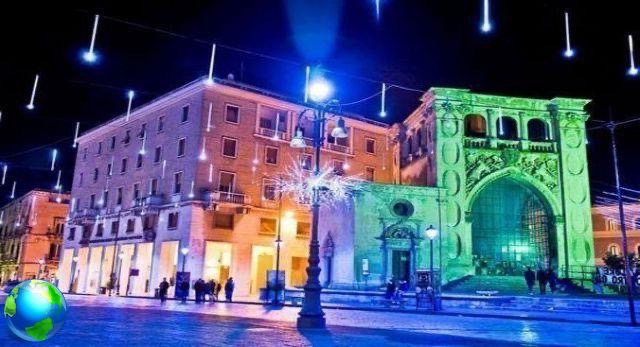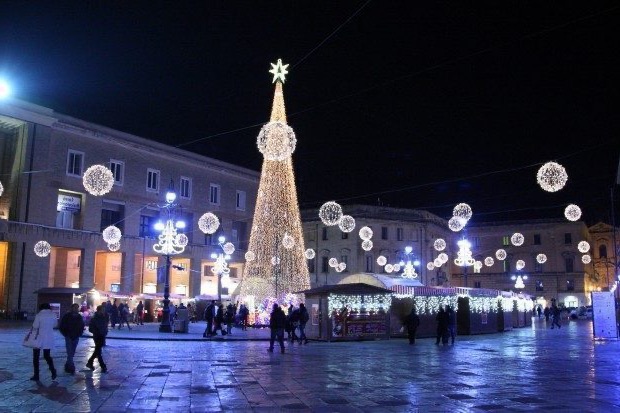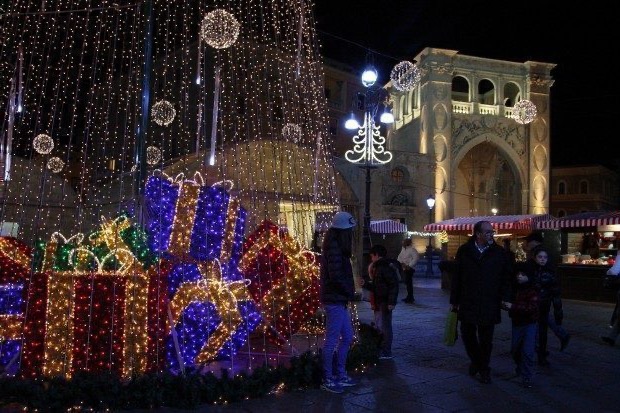Christmas in Salento, here are all the traditions that begin in November, the lights and the gastronomy of the holidays, what to do and how to have fun in Puglia during the Christmas holidays.
Il Salento, a summer destination of excellence not only for Italians, it is a place deeply steeped in culture and traditions. Perhaps less known to tourists, who go with the spirit of spending a beach holiday and having fun, but its customs are still kept alive by the natives.

Among these, the Christmas is definitely most heartfelt holiday and it is above all a moment of aggregation and union of family and friends, more and more important due to the exodus of many Salento from their land. The Christmas period is therefore a congenial time to live and visit Salento in a different atmosphere.
Christmas is still the party to spend with loved ones: myself, from Salento but living abroad for a few years, I do not fail to take a flight to spend those days with my family.

The Christmas traditions in Salento concern both the folkloric and the culinary aspects. Preparations for Christmas decorations start early: usually after bridge of November 1st, the shop windows are filled with lights and you start thinking about the gifts to give. The squares of many countries come to life and color with the Christmas tree (last year, Lecce boasted the tallest Christmas tree totally built with lights in the world).
Since the climate in Salento is rather mild, a tree was erected in one of the most popular beaches in Porto Cesareo, thus reproducing "another Christmas" with lots of sun, umbrella and sun bed.

The preparation of typical foods for the Christmas period is a thought that soon haunts Salento grandmothers. The inevitable dishes are the pittule, leavened dough balls fried in oil, and purceddhruzzi, sweet similar to fried dumplings covered with honey, whose shape should recall that of small pigs, to which it owes its name.
Usually, on 7 December, the eve of the Immaculate Conception, many families still observe fasting, with the only infringement of having lunch with a puccia, white and spongy bread, seasoned with tuna and capers and pittule.

The Christmas Eve dinner is an institution. Preparations begin a few days earlier, the table is set with red and silver / gold provisions, and a menu based on fish: spaghetti with mussels or seafood risotto; tradition dictates the cod as a main course and countless side dishes.
Another culinary custom on Christmas Eve is also the almond paste fish, which owes its origin to the nuns dedicated to the preparation of dessert in the convents during the Christmas period. But also the cartellate they cannot be missing: from the wrapping name and the arabesque shape, they are a puff pastry cake seasoned with honey and candied fruit.

While many families go to church for the evening mass awaiting the birth of Jesus, many others wait at home, placing the Baby Jesus in the crib at midnight and exchanging good wishes. Suggestive is the evening mass at the Cathedral of Lecce, in Latin.
If there are children in the family, Santa Claus is expected to arrive (a man of the family agrees to disguise himself) and takes the opportunity to exchange gifts between children and adults. The children then recite the prayers learned in school, hoping for generous tips from family members.
Only after finishing the evening with the family, the squares and houses are filled with people to exchange greetings with friends and play.

During the whole Christmas period, in fact, we meet to play cards and the traditional bingo.
Lunch on Christmas day is based on meat: after a classic baked pasta or with sauce / ragù, lamb with potatoes is the highlight of Christmas. On the 26th, the day of Santo Stefano, many families indulge in a purifying broth after the binges of the previous days. For the more persistent families, there is still room for another lunch.
In addition to the typical markets that offer handicrafts, the tradition is still rooted today living nativity scenes. The larger one is a Tricase: with attention to the smallest details, you have the feeling of really immersing yourself in the period represented.


























